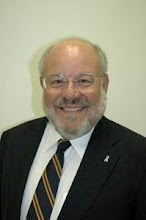Twenty-eight years ago, Dwight Eisenhower gave what has often been described as the most memorable farewell address by any U.S. president since George Washington. He warned in the speech about the “military-industrial complex.”
But in the original draft, as historian Douglas Brinkley has noted in an article on the address in the September 2001 issue of American Heritage magazine, Eisenhower was to warn not only of a “military-industrial complex” but of a “military-industrial-scientific complex.” (http://www.americanheritage.com/articles/magazine/ah/2001/6/2001_6_58.shtml)
Brinkley writes that because of the plea of Eisenhower’s science advisor, James Killian, was the word “scientific” eliminated.
The “military-industrial-scientific complex” was the far more accurate description of the complex of vested interests manipulating the U.S. then—and now.
Eisenhower in the 1961 address declared: “In the council of government, we must guard against the acquisition of unwarranted influence…by the military-industrial complex.” And although allowing the removal of “scientific,” he then went on with other words on this issue. He said, “Today, the solitary inventor, tinkering in his shop, has been overshadowed by task forces of scientists and laboratories” and people must be “alert” that “public policy could…become the captive of a scientific technological elite.”
The system of U.S. national laboratories which grew out of the crash program of World War II to build atomic bombs, the Manhattan Project, was—and is—the base for much of the scientific establishment about which Eisenhower was concerned.
With the war over, the scientists, engineers and corporate contractors, notably General Electric and Westinghouse, at the facilities which sprung up during the war continued to build nuclear weapons, thousands of them. But atomic weapons don’t lend themselves to commercial spin-off. What else could be done, they asked, with nuclear technology to perpetuate the jobs and contracts which began with the Manhattan Project?
After the war’s end, the Manhattan Project was turned into the Atomic Energy Commission. Under it, and at the former Manhattan Project laboratories which the commission took over and at the new laboratories it built, the push was on for all sorts of other things atomic: nuclear power plants, food irradiation, nuclear-powered airplanes and spacecraft, atomic devices for excavation—anything to bring more activity and money to the vested interests established during the war.
As President, Barack Obama draws from the federal scientific establishment for appointments and it continues to shape U.S. policy, notably energy policy, Eisenhower’s warning needs to be sounded again.
And we need to reduce the awesome political power of the government’s scientific complex.
Subscribe to:
Post Comments (Atom)


1 comment:
Thanks for this article. My scientist girlfriend and I have been talking about how she can do her work and yet not contribute to the military empire.
Post a Comment